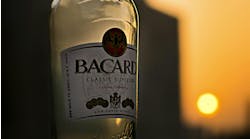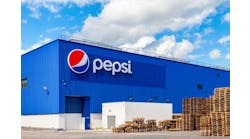Does it seem like nearly every beverage company in the world is coming out with a hard seltzer? It’s not just your imagination. Not only are alcoholic-beverage companies launching hard seltzers, but so are companies better known for soda pop. And even inexperienced entrepreneurs are joining the game.
“There are a lot of theories about why hard seltzers are so popular right now,” says Doug Miller, a professor at the Cornell School of Hotel Administration who is currently researching the hard seltzer market together with Adam Carmer, an assistant professor in the School of Hospitality and Tourism Management at the University of South Florida.
“One is that there’s always been a segment of the population that is agnostic on beverage choices – they select a beverage based on the situation rather than what the beverage is, and seltzers are a lifestyle choice,” says Miller.
Other reasons for hard seltzer’s popularity include millennial consumers who grew up drinking carbonated water, so they’re used to the fizz of seltzers, and that hard seltzer is “gender neutral,” unlike beer, which is somewhat considered a “man’s drink,” Miller notes. Wine coolers and the sweet drinks that have replaced them seem feminine.
In addition, seltzers are perceived as being healthier than other alcoholic beverages. All of these consumer preference reasons contribute to a market that is attracting entrants from all levels and specialties.
“We get constant requests to quote for the development of hard seltzers,” says Richard Wilson, vice president of Wilson Beverages, a drink development and formulation consultancy. “But I think there’s still room for growth if you’re innovative.”
From soft drinks to hard drinks
Perhaps the most interesting development currently in the hard seltzer explosion is the number of soft drink companies trying to break into the market. PepsiCo's Hard Mtn Dew, Coca-Cola Co.'s Topo Chico Hard Seltzer, AriZona SunRise Hard Seltzer, Spindrift Spiked and Sparkling Ice Spiked are just a few recent examples.
Naturally, despite the traffic jam on store shelves, each of these makers believes there is room for its product.
“Through consumer research, we knew that over half of our Sparkling Ice consumers were mixing our non-alcohol product with spirits,” says Sarah Gustat, executive vice president of marketing for Talking Rain Beverage Co., which makes Sparkling Ice flavored waters and released Sparkling Ice Spiked in 2020.
“When we launched Sparkling Ice Spiked, we were excited to jump right into the hard seltzer category and make our mark in a field that’s grown tremendously over the last few years," she continues. "We’ve been able to see some incredible growth since the launch and we expect that growth to continue.”
Spindrift Spiked followed a similar path. The product is an offshoot of Sprindrift sparkling water, which is flavored with fruit juice. The company introduced the alcoholic version in March 2021 following the same formula – it gets its flavor from real fruit juice. The product is currently available in Boston, Los Angeles and San Diego.
Sparkling Ice Spiked and Spindrift Spiked are produced by companies that are small relative to the other three examples cited above. And they are essentially going it alone – the other three have partnered with major alcoholic beverage companies.
For example, Topo Chico, which is owned by Coca-Cola, counts on Molson Coors to produce, distribute and market Topo Chico Hard Seltzer. The seltzer is available in nine markets currently and will launch nationally in 2022.
“Molson Coors has been able to use generations of experience in the alcoholic beverage industry to responsibly reach consumers in the market while taking another significant step in growing the above-premium portfolio and becoming a major competitor in the hard seltzer segment,” according to a spokesperson representing both Coca-Cola and Molson Coors.
The beer company reportedly is discontinuing its Coors Light Hard Seltzer brand in the U.S. to focus on its other hard seltzer brand, Vizzy, as well as the Topo Chico contract.
“Molson Coors has been able to use its marketing, sales and distribution expertise for a scaled national launch at an accelerated pace, prioritizing markets where Topo Chico sparking mineral water is known and loved,” the spokesperson continues.
Not to be outdone by its main competitor, PepsiCo also jumped into the hard seltzer market by partnering with a brewer, in this case Boston Beer Co. The companies announced in August that they will collaborate on Hard Mtn Dew, capitalizing on the name recognition of PepsiCo’s Mountain Dew soda. Boston Beer Co., maker of Sam Adams Boston Lager, will produce the drink and PepsiCo will sell and distribute it. The companies expect to have the product on shelves in early 2022.
AriZona has partnered with Heineken USA for its hard seltzer. AriZona SunRise Hard Seltzer is manufactured by Hornell Brewing Co., which is owned by Don Vultaggio, who also owns AriZona. Heineken USA handles the marketing and distribution. The seltzer was launched in early 2021.
“AriZona is a well-known, respected, and popular non-alcoholic brand that brings consumer trust in the juice space, while Heineken brings strong relationships with the distributor network in the U.S. and brand building expertise in beverage alcohol,” says Karla Flores, director of marketing, innovation and commercialization at Heineken USA.
This is not AriZona’s first partnership with a brewer – in 2017 AriZona and Molson Coors launched Arnold Palmer Spiked Half & Half.
Can they compete?
Soft drink companies have ventured into the world of alcoholic beverages before – consider hard root beer, for example – but can they compete head-to-head with alcoholic beverage companies on the same product?
“The ironic thing is that ‘mountain dew’ is slang for moonshine,” Miller notes. “Soda companies have marketing machines, and they have connections within the off-premise locations, convenience stores and box stores, so that can afford them favorable product positioning. They can’t pay slotting fees (for alcoholic products), but if you have connections and know the people, it helps.”
The distribution issue, naturally, favors the bigger companies. But the smaller players are trying hard. Despite the fact that alcoholic beverages require different distribution strategies from soft drinks, Gustat says Talking Rain leveraged its existing direct store delivery (DSD) network and distributor partnerships to get Sparkling Ice Spiked on shelves quickly.
“Spiked is now sold in 49 or 50 states and that wouldn’t be possible without both our existing and new retail customers and distributors who have taken us on and continue to support our brands,” Gustat says.
Miller says he suspects the new seltzers can compete if they position themselves as something different from the current offerings. That might mean creating a more sophisticated feel, or launching as a local or regional product that connects with a community.
Mitch Barnard, founder of beverage co-packer Wildpack Beverages, agrees that geography plays a key role in a smaller brand’s success. His company co-packs hard seltzer for about two dozen brands, and he says the most successful ones win customers in one geographical area before moving onto other markets.
"The other thing I’ve seen among successful seltzers is the willingness to adapt their flavors to the ever-changing demand in the market,” he says.
Wilson agrees that innovation is key. Trying to be a “me-too” product won’t lead to success: “I think if somebody is just trying to come up with a catchy name and trying to get space from White Claw or Truly, they won’t be successful. But there’s room for growth if you’re innovative. We’ve seen products with natural flavors or added juices or adaptogens, but the more you put in there the more it costs, and we have to see how much people will pay.”
Entrepreneurs join the fray
Another trend in the hard seltzer market is that some entrants are made by very small companies or simply entrepreneurs seeking a new gig.
“You see two pools of origin stories for hard seltzers,” Barnard says. “The first pool is a brand that is ultimately owned by one of the major brand houses, and then you see a lot of entrepreneurs with no preexisting direct connection to the soda industry or the alcohol industry.”
Wilson also has observed a wide range of people entering the market. “Our clients could be start-ups, they could be established companies, or they could be people who used to work in the space for someone else and now are on their own. There’s a lot of innovation going on to figure out what the new flavor is.”
Why does this segment attract people with little or no experience? “If you win in the seltzer category, and you sell to one of the brand houses, the multiples you can sell at are substantial,” Barnard says. “The total units of gain is much greater than a typical sale. So if you’re an entrepreneur and you see a market trend like this, you’ll jump on it.”
Sugar, vodka, tequila or wine…or cannabis?
All of the hard seltzers mentioned above, as well as market leaders such as White Claw and Truly, contain alcohol made from sugar. This means they are classified as beer, per the definition of the Alcohol and Tobacco Tax and Trade Bureau of the U.S. Dept. of Treasury. Distribution rules vary by state, but the rules for distributing beer generally are more lax than those for distributing distilled spirits.
But that hasn’t stopped companies from introducing seltzers that use wine or distilled spirits as their alcoholic base.
For example, California wine maker Trinchero Family Estates – maker of Sutter Home and other well-known wines – jumped into the market in 2020 with Del Mar Wine Seltzer.
“We see the Del Mar Wine Seltzer consumer as a youthful and active wine consumer who is looking for something more health-oriented to suit their lifestyle,” says Brie Wohld, vice president of marketing for Trichero Family Estates. “This audience cares about label claims, nutrition facts and ingredient transparency – all attributes that drove our strategy when developing the low-alcohol, less-than-100 calorie, gluten-free, vegan and non-GMO wine-based offering.”
Trinchero wasn’t the first winemaker in the seltzer game – E&J Gallo beat them by a year. But Gallo’s entry, High Noon, is vodka based. The brand uses real juice and comes in watermelon, grapefruit, black cherry, peach, mango, lime and pineapple varieties.
Tequila maker Jose Cuervo joined the market in 2021 with Playamar Hard Seltzer, a tequila-infused seltzer that comes in four flavors: lime, grapefruit, mango and black cherry.
Finally, for consumers who prefer the devil’s lettuce instead of alcohol, a slew of companies have recently introduced cannabis-infused seltzers. Makers include small companies like Cann, Hi5, Levia and Oh Hi—and at least one larger entity in the alcohol space, Pabst Labs, which introduced Pabst Blue Ribbon High Seltzer in 2021. On the soda pop side, Jones Soda announced in July that it is working on a cannabis-infused seltzer, too.
All of these intoxicating seltzers make for a very crowded market. But that doesn’t mean there isn’t room for more, Wilson says.
“If you remember, craft beer breweries went from 600 to 6,000 in a short period of time,” he says. “Now craft beer is losing steam and I think that’s due to hard seltzers. With hard seltzer, there’s still room for experimenting and expanding into new subcategories.”

